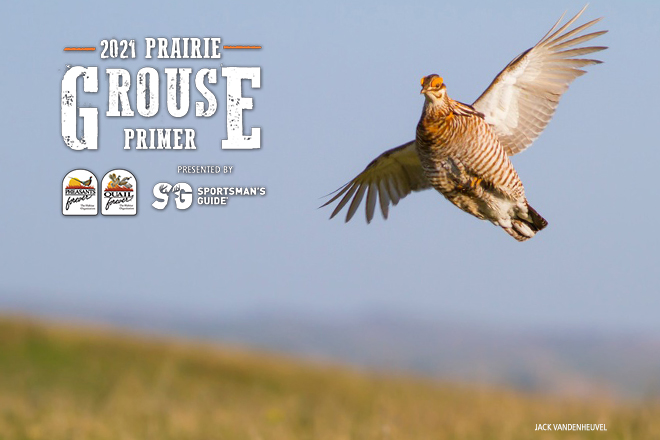
Kansas has avoided hard-core drought, and greater prairie chicken hunting should be good this year
By Chad Love
Kansas has a small but dedicated number of prairie grouse hunters. According to Jeff Prendergast, small game specialist with the Kansas Department of Wildlife, Parks and Tourism, a relatively mild summer and generally good habitat conditions means a good chance of success for those willing to walk.
“Unlike many other western states this year, Kansas has remained relatively drought free,”
says Prendergast. “Good spring precipitation produced good nesting and cover through much of the state.”
However, says Prendergast, that’s not to say there weren’t some areas of concern.
“Widespread annual burning practices in the Flint Hills limits nesting habitat in the core of this region,” says Prendergast. “And a hot, dry stretch mid-summer was causing some plant stress and impacting the quality of habitat.”
Prendergast says recent rainfalls across the state should alleviate some of those concerns, and as far as the season outlook is concerned, he says those willing to lace up their boots will find birds.
“Prairie chicken hunting is a game of miles, experience, and luck,” says Prendergast, “and with the nesting conditions we've had, those willing to put in the miles should, with a little luck, be rewarded.”
According to Prendergast, the traditional areas of prairie chicken density will offer both numbers and opportunity on Kansas’ large number of walk-in hunting areas.
“The Smoky Hills region of north-central Kansas has both good densities of prairie chickens matched with public access to appropriate habitat,” says Prendergast. “Prairie chicken numbers are also strong in the Northern High Plains region of northwest Kansas and this region receives much less attention from hunters.”
Perhaps the biggest change for Kansas chicken hunters this year is in the season length, namely, it’s considerably longer this year.
“There have traditionally been two season segments in Kansas,” explains Prendergast. “There’s been an early season from mid-September to mid-October and a late season starting in late November and running through January. To provide additional opportunity beginning this year, the prairie chicken season will open September 15 and run continuously through January.”
Prendergast says the lengthened season will mean more opportunity for hunters. “In addition to just more days this means that hunters in Kansas for the traditional pheasant and quail opener will have the opportunity to harvest chickens the same weekend,” he says.
Prendergast also reminds hunters that Kansas requires a prairie chicken stamp for hunters to aid in collecting information for managing the species, and that there is a closed zone in the southwest part of the state to protect lesser prairie chicken populations.
“Hunters will want to review the boundaries to ensure that they aren't accidentally straying inside the area where chicken hunting is off limits,” he says.
Okie Chad Love is editor at Quail Forever. He invades Kansas for some prairie chicken hunting every season.